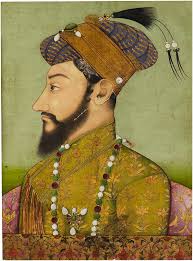The Mughal empire was founded by Babur in c. 1526 after defeating Ibrahim Lodhi in the battle of Panipat. After that number of rulers like Akbar the Great, Shah Jahan, Aurangzeb etc. ruled India for more than 120 years and survived until c. 1857. But after the death of Aurangzeb in c. 1707, the empire was started to decline. There were number of factors behind the decline of Mughal empire that’s includes the role of Aurangzeb, economic, social etc. factors.
Also Read : Early Medieval India – Religious Spheres
Mughal Empire – Technological Progress
Establishment of Turkish Rule in India
Role of Aurangzeb in the Decline of Mughal Empire
Many historians like Jadunath Sarkar opined that mistake committed by Aurangzeb were responsible for the decline of Empire. He was a man of suspicious mind and hence this nature of him results in the bad relations with Rajputs. The religious and Deccan policy of Aurangzeb were also responsible for the decline of empire. Although these factors were only the reasons behind the decline of empire.

Because Aurangzeb was not as orthodox as he was portrayed by historians. He ruled over most extensive empire in the history of empire. Most of the Rajputs were still in the support of Aurangzeb and the ratio of Rajput employees was around 33% in Mughal empire. And hence, there was nothing anti-Rajput in his policy.
Jagirdari Crisis

During the reign of Aurangzeb, the good Jagirs were remains few in number and hence, Mansabdars started to compete with each other for good Jagirs which eventually result in exploitation of peasants as Fauzdari rights (revenue collection rights) were given to Mansabdars by Aurangzeb. This whole crisis came to known as Jagirdari crisis. Hence, the Jagirdari crisis severely impacted the foundation of the Mughal empire.
Role of Agrarian Crisis
Many historians like Irfan Habib held agrarian crisis responsible for the decline of 17th century. During the reign of Shah Jahan, the rate revenue was increased to 50% of produce and the concept of Nabud (peasants can left 15% of their land uncultivated) was abolished. During the reign of Aurangzeb, the Izaradari system in which intermediaries gave a free hand over peasants. The peasants suffered immensely as Aurangzeb was busy in Deccan for almost two decades.
Fauzdari powers were misused by officials. Drought also affected agriculture produce severely as mentioned by Kafi Khan that a serious drought was struck in c. 1667-68. The revolts of Jats, Satnamis and Sikhs were essentially the outcome of the economic and agrarian crisis.
Role of Scientific Backwardness and Monetary crisis
According to M. Ather Ali, industrial technology was remains stagnant during the Mughal empire. The weapon technology was very behind as compare to Europe during the 16th and 17th century. That’s why small number of European were successful in defeating large forces of Indian rulers.
According to Shirean Mousui, during the opening decade of 18th century, the empire accumulated huge number of silver coins and the value of silver fall sharply in international market during this period. In Mughal empire, the liquidity was got increased and hence, the inflation in Mughal empire caused a Monetary crisis, which was also a reason for revolt and rebellions.
Limitation of Mughal Empire’s Character
Mughal empire was a top-heavy empire and hence, when weak ruler started to sit on the throne of Mughals, the political system was started to collapse. The welfare elements were low in the policies of Mughals. It was necessarily a military state. The war of succession was another cause of the decline of empire. Every time the question of succession was decided in the battlefield. These problems were further increased after the death of Aurangzeb.
Role of Mughal Nobility, Foreign Invasions and Regional Powers
Nobility obeyed Mughal rulers until the death of Aurangzeb. After the death of him, the nobility started playing the role of kingmakers. They started to putting weak candidates on the throne, so that they can enjoy their authority over state system. Mir Jumla, Sayeed Brothers and Imad-ul-Mulk were those nobles who played the role of kingmakers.
Invaders like Nadir Shah and Ahmad Shah Abdali played significant role in decline of Mughals. Nadir Shah invaded India in c. 1739, defeated Mughals at the battle of Karnal. The carried huge wealth along with Kohinoor diamond and Peacock throne of Shah Jahan. After that Ahmad Shah Abdali invaded India seven times during the period of c. 1748 – c. 1761. The Marathas along with the Mughals and other regional rulers were defeated by Abdali at the 3rd Battle of Panipat (c. 1761).
The emergence of regional forces in the form of succession states like Hyderabad, Awadh, Bengal, Marathas etc. changed the balance of power in India. thus, the central authority became insignificant and hence, great power Mughal empire lost its relevance. Hence, different factors were involved in the decline of Mughal empire.

Pingback: 18th Century – Debates on Its Characterization
Pingback: Bhakti Movement – Rise and Impact on Society -
Pingback: Marathas Movement – The Rise - historylover.in